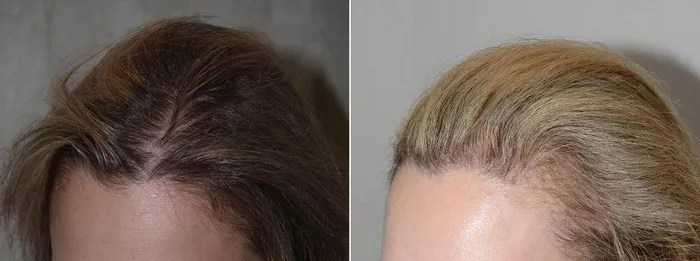Hair transplants have become a popular solution for individuals looking to restore their natural hairline and combat hair loss. However, many prospective patients have questions about the post-transplant phase, particularly concerning when the transplanted hair will fall out. In this informative article, we will delve into the intricacies of post-hair transplant care and address the common queries surrounding the shedding of transplanted hair.
1. The Initial Phase: Immediate Post-Transplant Period
In the immediate aftermath of a hair transplant procedure, patients often experience a mix of anticipation and curiosity. What they see are the newly transplanted hair grafts, small hair-like structures that give hope for a fuller mane. These grafts represent the first visible sign of the transplant’s success.
However, it’s vital to understand that these transplanted hairs are not permanent. In this initial phase, patients may witness the transplanted hair’s presence, but it is entirely normal for some of these hairs to shed within the weeks to come. This process sets the stage for the regrowth of stronger, permanent hair in the post-transplant journey.
2. Understanding “Shock Loss”
“Shock loss” refers to the temporary shedding of both the transplanted hair and some of the existing native hair in the vicinity of the transplant area. This phenomenon can occur within the first two to eight weeks after the procedure.
Shock loss happens because the hair follicles undergo stress during transplantation, causing some of them to enter a dormant phase temporarily. This phase can be unsettling for patients, but it’s essential to remember that it’s part of the normal post-transplant process.
3. When Does the Shock Loss Occur?
The timing of “shock loss” in the aftermath of a hair transplant can be somewhat unpredictable. While not everyone experiences it, those who do may wonder when to expect it. Shock loss typically occurs within the range of two to eight weeks post-transplant, although the precise timing can vary from person to person. Some individuals may notice it earlier, while for others, it might happen closer to the two-month mark. This temporary shedding can be disconcerting, but it’s important to remember that it’s a natural part of the post-transplant process. Patience is key as you await the regrowth of your newly transplanted and stronger hair.
4. Regrowth and Progress
After the initial shock loss phase, patients can expect to see regrowth of their transplanted hair. The regrowth usually begins within a few months after the procedure.
Over the following months, you’ll notice gradual improvements in hair density and coverage. This regrowth process continues over the course of a year or more, leading to the final result of your hair transplant.
5. Post-Transplant Care and Maintenance
While waiting for the transplanted hair to regrow, it’s essential to follow your surgeon’s post-transplant care instructions meticulously. These instructions typically include guidelines on washing your scalp, avoiding excessive sun exposure, and refraining from strenuous physical activities.
It’s also advisable to maintain a healthy lifestyle and diet, as these factors can contribute to the success of your transplant and overall hair health.
See Also: How Long to Sleep With Neck Pillow After Hair Transplant?
6. Final Thoughts: Patience Is Key
In conclusion, the timing of when transplanted hair falls out and regrows can vary among individuals, but it generally follows a pattern. Understanding the concept of shock loss and having realistic expectations about the post-transplant process is crucial.
Remember that hair transplantation is a long-term investment in your appearance and self-confidence. Patience, coupled with proper care and adherence to your surgeon’s recommendations, will lead to the successful regrowth of transplanted hair and a fuller, more natural-looking head of hair in the months following the procedure.
While the initial shedding of transplanted hair can be disheartening, it’s merely a temporary phase in the journey toward your desired hair restoration results. Trust the process, and soon you’ll enjoy the benefits of your hair transplant, which can last a lifetime with proper care and maintenance.


